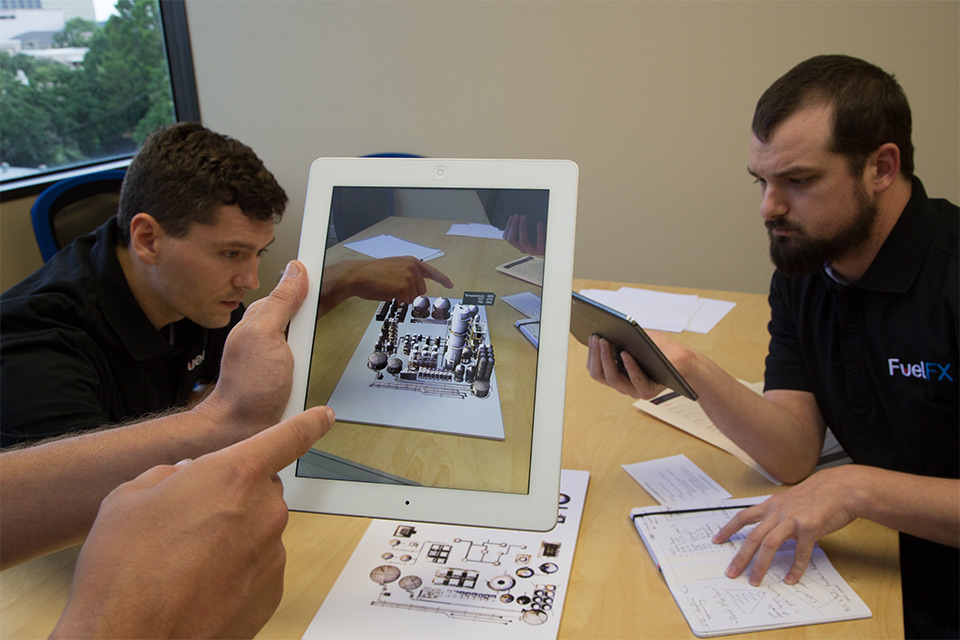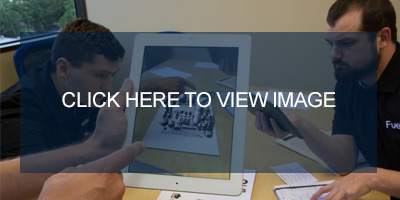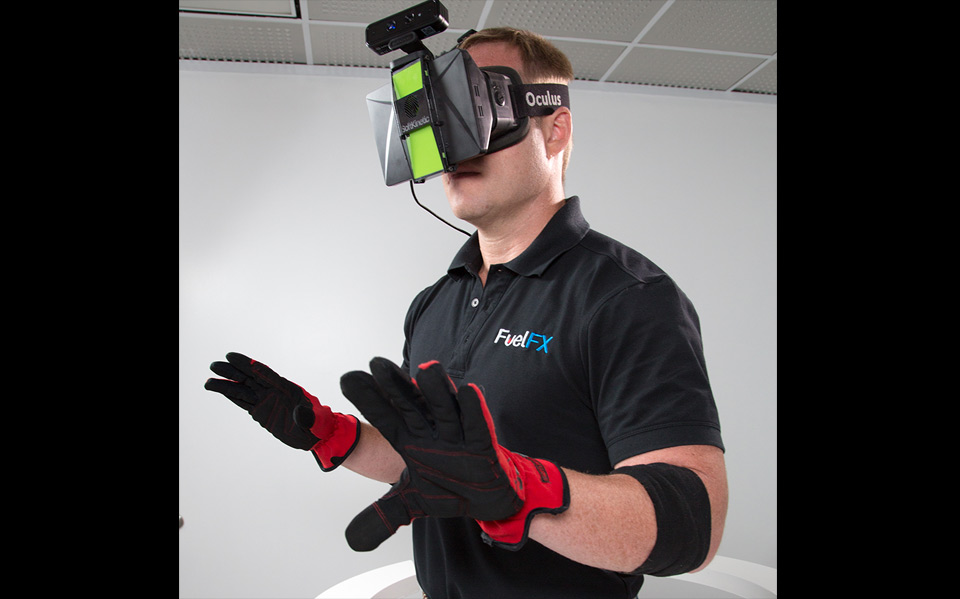Visualization Techniques Enhance Oil, Gas Training, Operations

The latest in 3D animation and imagery are allowing oil and gas companies to enhance worker training and demonstrate technical concepts and techniques.
FuelFX, a media and software company almost exclusively focused on the oil and gas industry, works with major operators, oilfield service companies and large manufacturers. One part creative content provider and one part technologist, FuelFX creates content for marketing and training departments and for the operational side of oil and gas companies to help in those processes.
Describing the company as a broker of knowledge, Diaz said that cutting-edge 3D and visualization technology can allow companies to be more efficient in training workers, as well as improve efficiency and operational safety. Founded seven years ago, the company really grew following the 2010 Deepwater Horizon incident, when FuelFX worked with BP plc and other members of the Unified Command by producing daily infographics and visualizations to update the Unified Command team, the White House and U.S. public on the efforts, operational plans and challenges involved in the Deepwater Horizon incident response. Other team members included Transocean, the U.S. Coast Guard, U.S. Department of the Interior, the U.S. Environmental Protection Agency and the Occupational Safety and Health Administration.
3D imaging is not a new thing, but the next thing, representing a step change in communications. The need for using new visualization tools stems from the fact that, most of the time, the magic in the oil and gas industry happens with things that you can’t see or that are 5,000 feet underground, or encased in steel or in high pressure, high temperature environments, FuelFX CEO Oliver Diaz told Rigzone, on why Hollywood effects and high-end information graphics are used to tell complicated technology stories in the oil and gas industry.
These effects allow companies to sell, understand, and learn how to operate technology, as well as provide business intelligence on the operations side, Diaz said. 3D graphics can range from low-end graphics, such as process diagrams and infographics, to 3D animation in video to interactive media tools such as virtual and augmented reality.

Source: FuelFX

Virtual reality, also called immersive multimedia, is a computer-simulated environment that can simulate a person’s physical presence in places in real or imagined worlds. Efforts to develop virtual reality tools have been ongoing since the 1980s; it has only been in recent times that the technology is now affordable to a wider audience. One example of virtual reality technology is Oculus VR, a virtual reality startup that has been purchased by Facebook for $2 billion. The company offers the Oculus Rift, is a virtual reality headset system that was initially developed for gaming.
The oil and gas industry is using virtual reality to train workers for offshore and onshore rig environments, virtually placing a worker on a rig so they can learn to navigate and learn about different operations on board the rig. Virtual reality also has been used in combat training in the military and for training medical personnel.
While virtual reality replaces the real world with a simulated environment, augmented reality takes digital information and visuals and puts it in the space around a person.
“Augmented reality works by augmenting reality with information,” Diaz noted.
Examples of this technology include facial recognition and visual and auditory technology that can tell what the probability is that someone is lying.
In the oil and gas industry, augmented reality technology can allow oil and gas companies to see inside equipment at a refinery to monitor temperature and supply levels, said Diaz. Augmented reality hardware components can be found in mobile devices like tablet computers and smart phones and in monitors and display systems worn by a user. Google Glass augmented reality glasses are one example of this technology. Augmented reality applications also are being used to integrate printed material with video, in education, industrial design, gaming, medical, navigation and communication in the military.
The idea because 3D graphics and imaging technology is to better impart knowledge in training in a way that allows workers to retain more information, allowing people to understand where technology can fit into their operations.
“It’s about changing people’s experience and situational awareness at work,” Diaz explained. “Basically, it’s about communicating, training and imparting knowledge with the solutions.”
Some makes of cars allow a driver to look at an app to locate a part and determine what’s wrong with a car, rather than flipping open a manual.
“Imagine what can be done for an offshore facility where there’s tons of equipment,” said Diaz of the potential for augmented reality on offshore rigs.

Source: FuelFX

Virtual reality tools in oil and gas could be used for training and to recreate an incident to determine its cause. By merging the digital and real worlds, augmented reality technology could allow workers on offshore and onshore rigs and other facilities to get directions on how to operate equipment.
These tools make life a video game, which is how the last few generations of Americans, particularly boys, have grown up. In video games, players are put in scenarios and given tools and resources to show their where to go and what to do. These skills can allow them to navigate situations in real life, Diaz noted.
The retirement of Baby Boomer-aged workers, the large age gap between Baby Boomers and younger workers, and the number of workers changing jobs within the industry, makes knowledge retention difficult. Using completely immersive tools such as augmented reality can enable knowledge transfer.
“Art and visual graphics have always been about knowledge retention and transfer,” said Diaz, citing ancient cave art has informational tools on killing buffalo, moon cycles or where caribou herds are located.
WHAT DO YOU THINK?
Generated by readers, the comments included herein do not reflect the views and opinions of Rigzone. All comments are subject to editorial review. Off-topic, inappropriate or insulting comments will be removed.
- How Likely Is an All-Out War in the Middle East Involving the USA?
- Rooftop Solar Now 4th Largest Source of Electricity in Australia
- US Confirms Reimposition of Oil Sanctions against Venezuela
- Analyst Says USA Influence on Middle East Seems to be Fading
- EU, Industry Players Ink Charter to Meet Solar Energy Targets
- Russian Ships to Remain Banned from US Ports
- Brazil Court Reinstates Petrobras Chair to Divided Board
- EIB Lends $425.7 Million for Thuringia's Grid Upgrades
- Var Energi Confirms Oil Discovery in Ringhorne
- Seatrium, Shell Strengthen Floating Production Systems Collaboration
- An Already Bad Situation in the Red Sea Just Got Worse
- What's Next for Oil? Analysts Weigh In After Iran's Attack
- USA Regional Banks Dramatically Step Up Loans to Oil and Gas
- EIA Raises WTI Oil Price Forecasts
- How Likely Is an All-Out War in the Middle East Involving the USA?
- Venezuela Authorities Arrest Two Senior Energy Officials
- Namibia Expects FID on Potential Major Oil Discovery by Yearend
- Oil Markets Were Already Positioned for Iran Attack
- Is The Iran Nuclear Deal Revival Project Dead?
- Petrobras Chairman Suspended
- Oil and Gas Executives Predict WTI Oil Price
- An Already Bad Situation in the Red Sea Just Got Worse
- New China Climate Chief Says Fossil Fuels Must Keep a Role
- Oil and Gas Execs Reveal Where They See Henry Hub Price Heading
- Equinor Makes Discovery in North Sea
- Macquarie Strategists Warn of Large Oil Price Correction
- DOI Announces Proposal for Second GOM Offshore Wind Auction
- Standard Chartered Reiterates $94 Brent Call
- Chevron, Hess Confident Embattled Merger Will Close Mid-2024
- Analysts Flag 'Remarkable Feature' of 2024 Oil Price Rally



